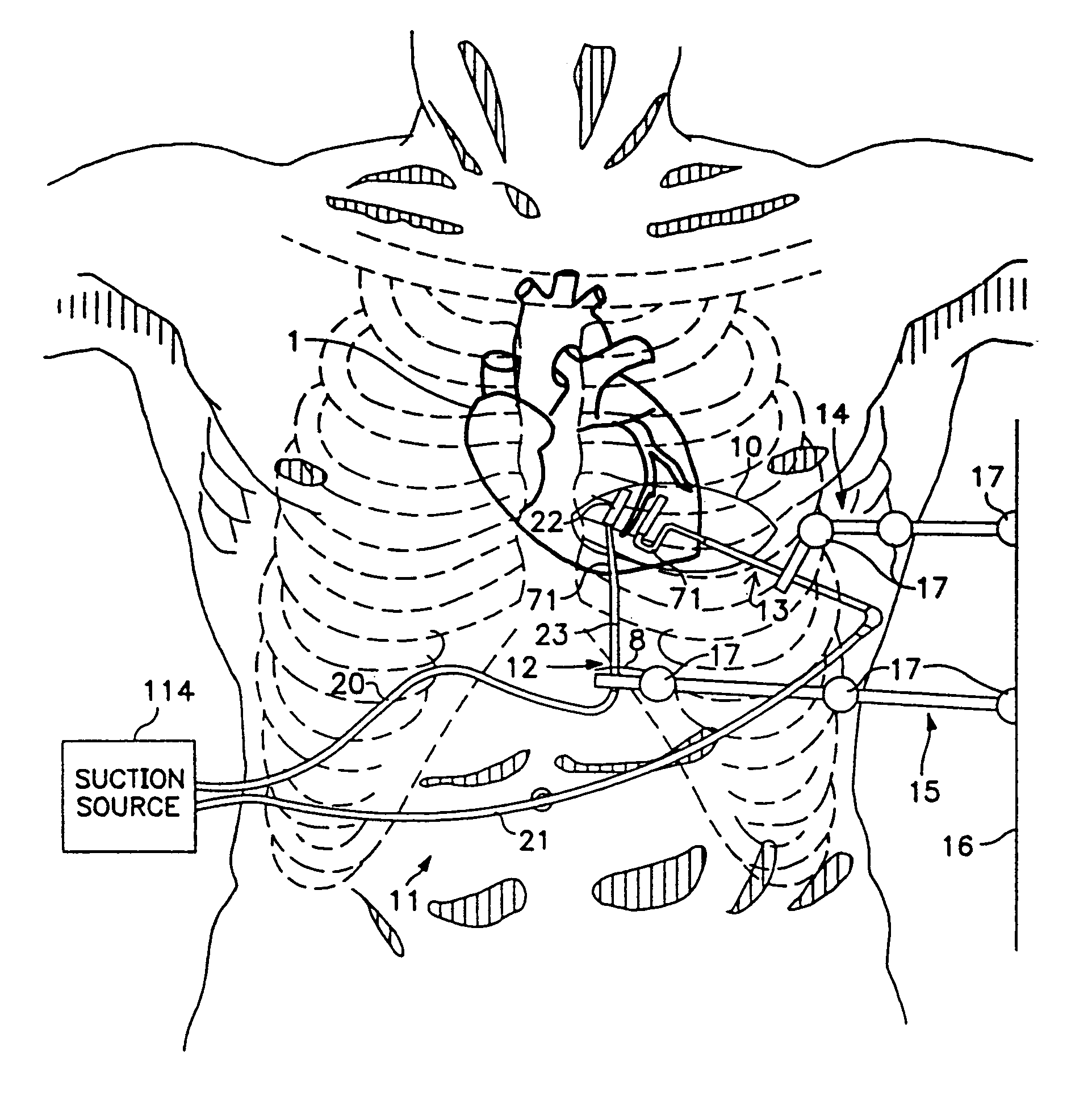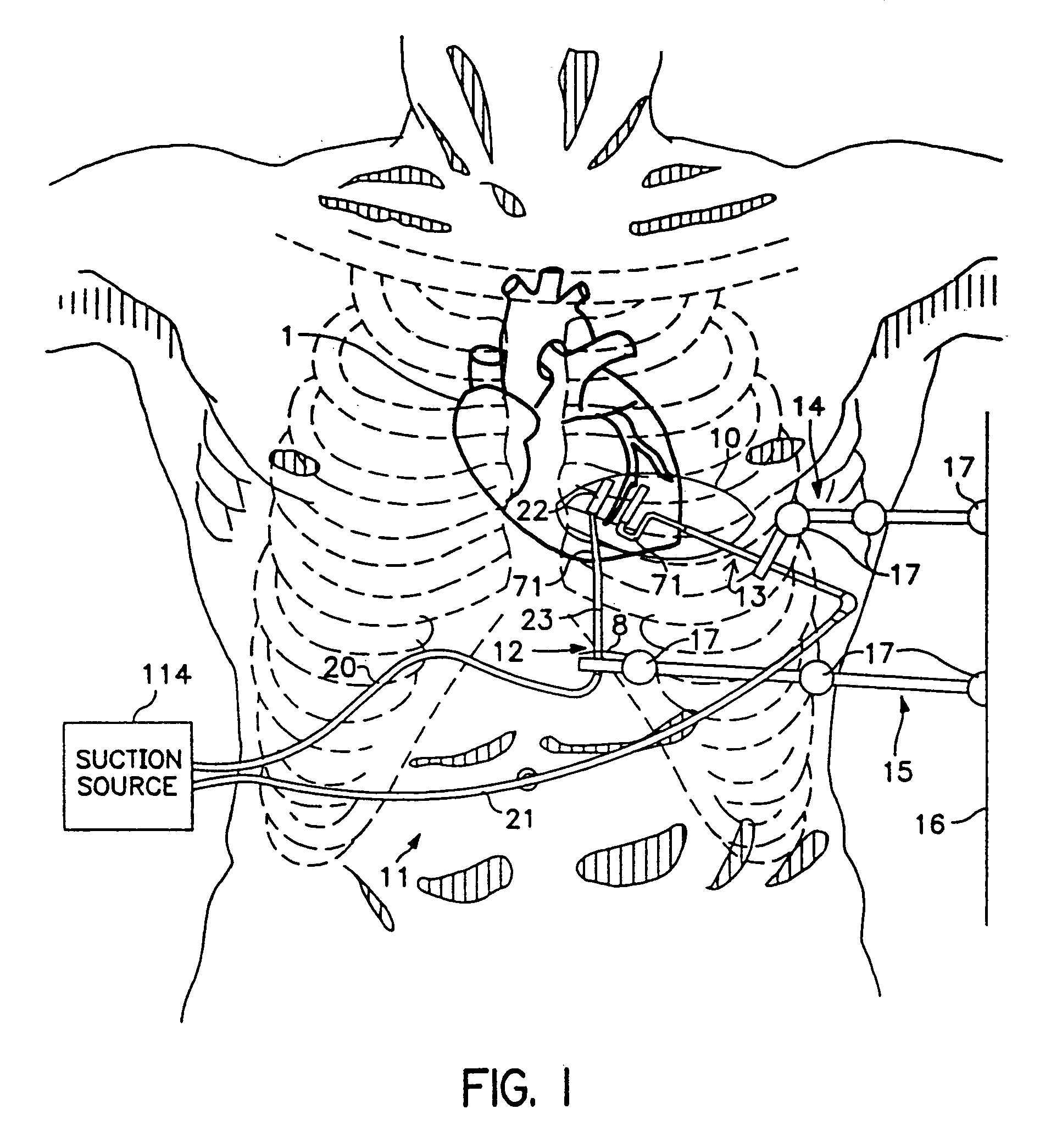Method and apparatus for temporarily immobilizing a local area of tissue
a local area and tissue technology, applied in the field of surgery, can solve the problems of insufficient blood flow to various areas of the heart, discomfort of angina, and the leading cause of morbidity and mortality in western societies, and achieve the effects of minimally invasive or micro-surgery, facilitating the operation of coronary artery bypass graft surgery, and avoiding significant deterioration of the pumping function of the beating hear
- Summary
- Abstract
- Description
- Claims
- Application Information
AI Technical Summary
Benefits of technology
Problems solved by technology
Method used
Image
Examples
Embodiment Construction
[0053]FIG. 1 is a view of the immobilizing device 11 being used to temporarily immobilize an area of heart tissue. In the preferred embodiment, surgical access to the local area of heart tissue is achieved through a mini-thoracotomy, preferably performed within either the fourth or fifth intercostal space. An incision 10 of approximately 10 centimeters is made into chest cavity between the ribs (seen here in phantom.) The rib cartilage may be temporarily removed and the ribs surrounding the incision slightly spread apart using a retractor (not shown) to provide adequate surgical access to the mammary artery and the heart. As seen, a pair of suction devices 12, 13 are introduced. The first suction device 12 is introduced through a small stab wound 8 in between the ribs approximately 10 cm. below incision 10. This stab wound is made in any acceptable manner. Incidentally, once the surgery has been completed, the stab wound may be used for the thorax drain after the closure of the ches...
PUM
 Login to View More
Login to View More Abstract
Description
Claims
Application Information
 Login to View More
Login to View More - R&D
- Intellectual Property
- Life Sciences
- Materials
- Tech Scout
- Unparalleled Data Quality
- Higher Quality Content
- 60% Fewer Hallucinations
Browse by: Latest US Patents, China's latest patents, Technical Efficacy Thesaurus, Application Domain, Technology Topic, Popular Technical Reports.
© 2025 PatSnap. All rights reserved.Legal|Privacy policy|Modern Slavery Act Transparency Statement|Sitemap|About US| Contact US: help@patsnap.com



